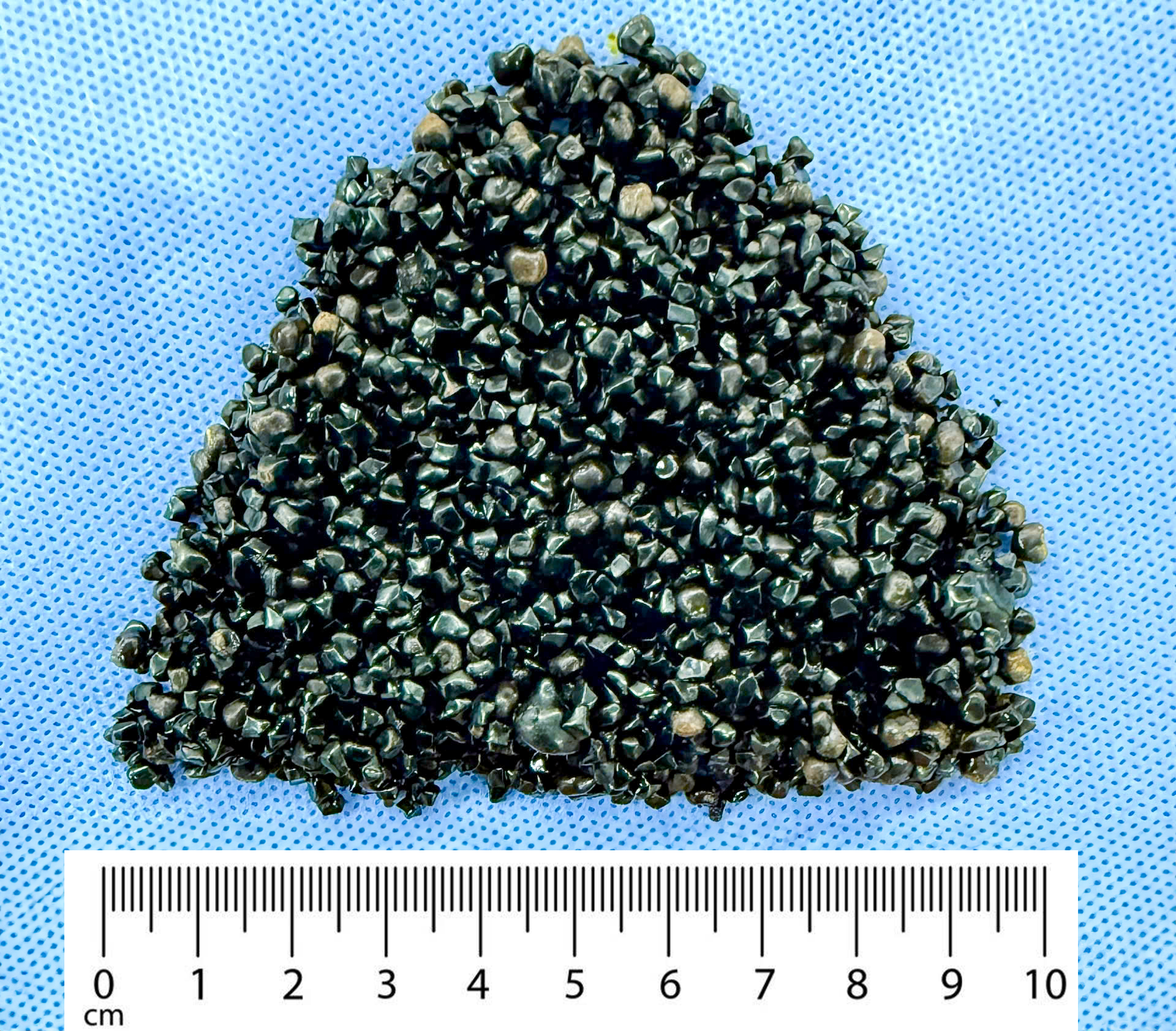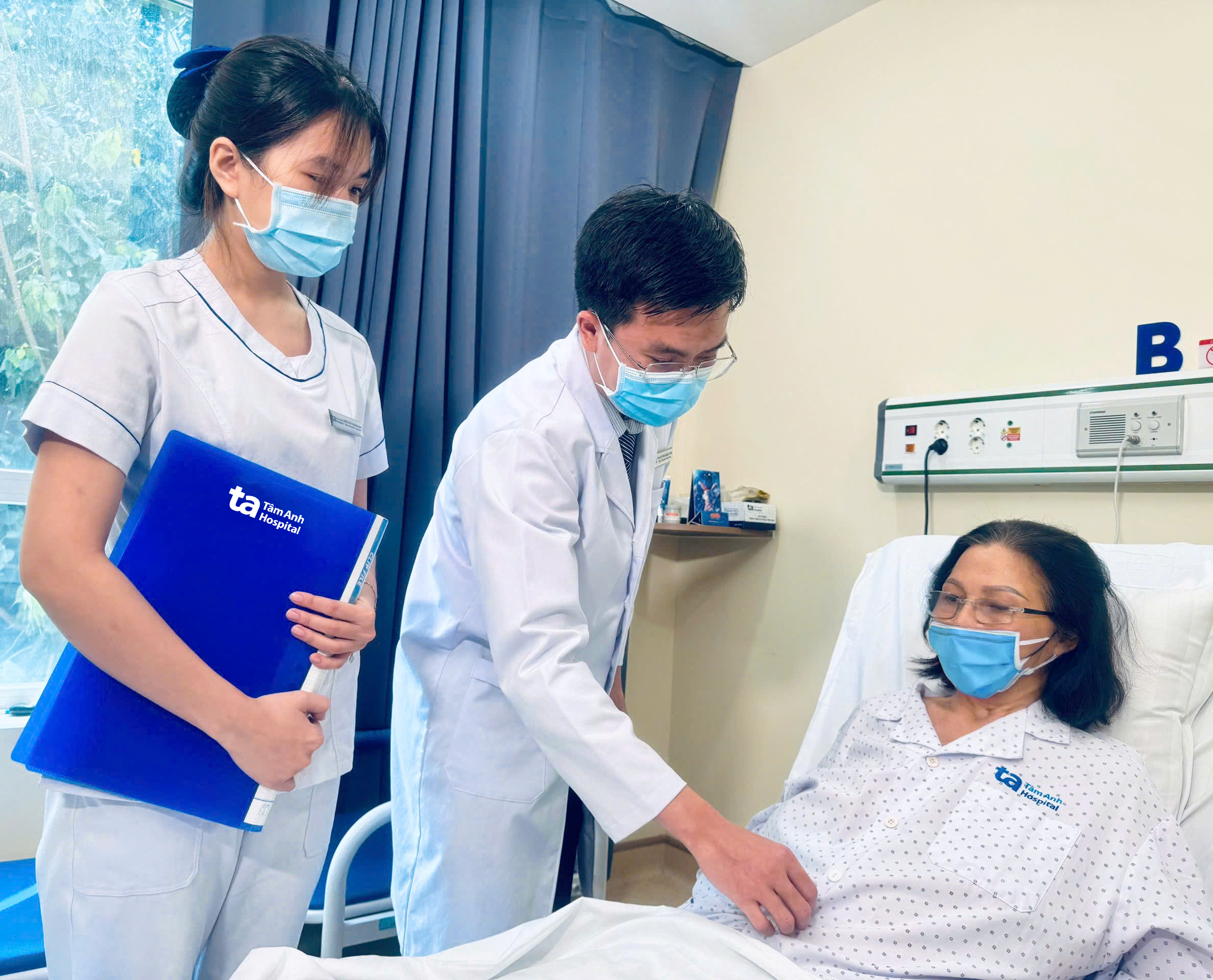Mrs. Thu had a history of biliary sludge 20 years prior and had been using supplements to dissolve gallstones. Recently, she experienced sudden, severe upper abdominal pain accompanied by vomiting. An ultrasound at Tam Anh General Hospital in Ho Chi Minh City revealed her gallbladder was packed with stones, distended to 5x2.4 cm. Her pancreas was enlarged and edematous, with fluid accumulation around the pancreas, duodenum, porta hepatis, stomach, spleen, and along the paracolic gutter. Blood tests confirmed acute pancreatitis and severe biliary obstruction.
"This is the case with the most gallstones I have ever encountered," said Doctor Pham Cong Khanh, from the Center for Endoscopy and Minimally Invasive Digestive Surgery at Tam Anh General Hospital in Ho Chi Minh City. Mrs. Thu's acute pancreatitis and biliary obstruction were caused by stones that had migrated from the gallbladder to the common bile duct, blocking bile flow and causing pancreatic fluid buildup. This prolonged obstruction activated pancreatic enzymes, leading to pancreatic damage and acute pancreatitis. Initially, Mrs. Thu required treatment to stabilize the pancreatitis before undergoing endoscopic surgery.
Surgeons removed thousands of 3-5 mm gallstones from her gallbladder. The surgical team also discovered a dilated common bile duct containing several stones, along with mildly dilated intrahepatic bile ducts. An endoscopic retrograde cholangiopancreatography (ERCP) procedure was performed to clear the stones from the common bile duct.
 |
Thousands of gallstones removed from Mrs. Thu's gallbladder. Photo: Tam Anh General Hospital |
Thousands of gallstones removed from Mrs. Thu's gallbladder. Photo: Tam Anh General Hospital
Post-surgery, Mrs. Thu recovered well, with her abdominal pain and nausea subsiding. Her digestive issues resolved within 5 days, and she was discharged.
Gallstones are a relatively common condition, primarily formed by cholesterol buildup due to an imbalance in bile components like cholesterol, bilirubin, and calcium salts. Gallstones can often exist for extended periods without causing symptoms, but complications can arise at any time.
 |
Mrs. Thu during a post-operative check-up after laparoscopic gallbladder removal. Photo: Tam Anh General Hospital |
Mrs. Thu during a post-operative check-up after laparoscopic gallbladder removal. Photo: Tam Anh General Hospital
To prevent gallstones, Doctor Khanh recommends a healthy diet rich in fiber from fruits, vegetables, and whole grains, along with healthy fats from sources like fish oil and olive oil. He advises limiting refined carbohydrates, sugar, and unhealthy fats. Regular exercise for at least 30 minutes a day, 5 days a week is also beneficial. Regular health check-ups and abdominal ultrasounds are crucial for early detection and timely treatment of gallstones.
Quyen Phan
| Readers can submit questions about digestive diseases here for doctor's answers. |












